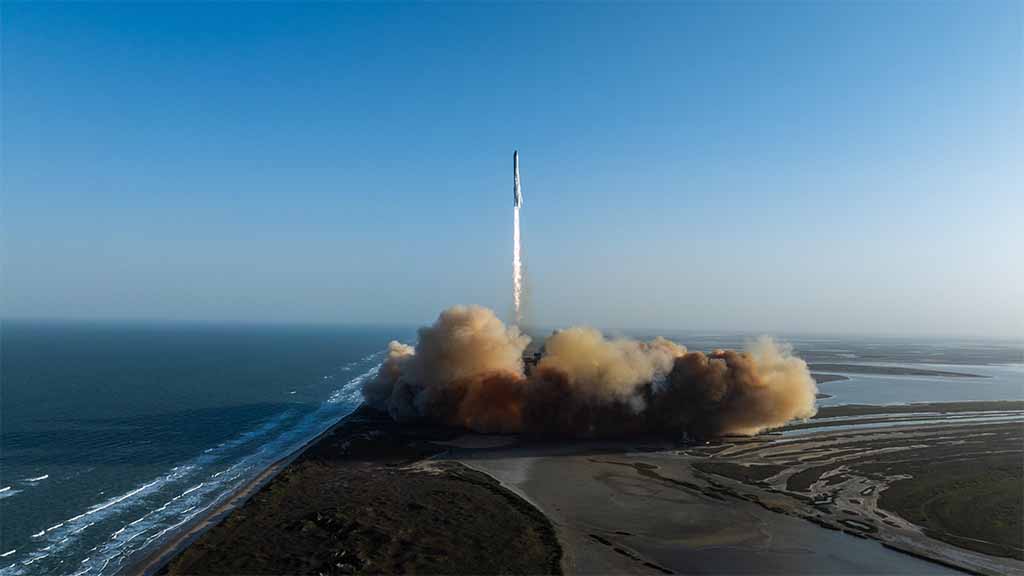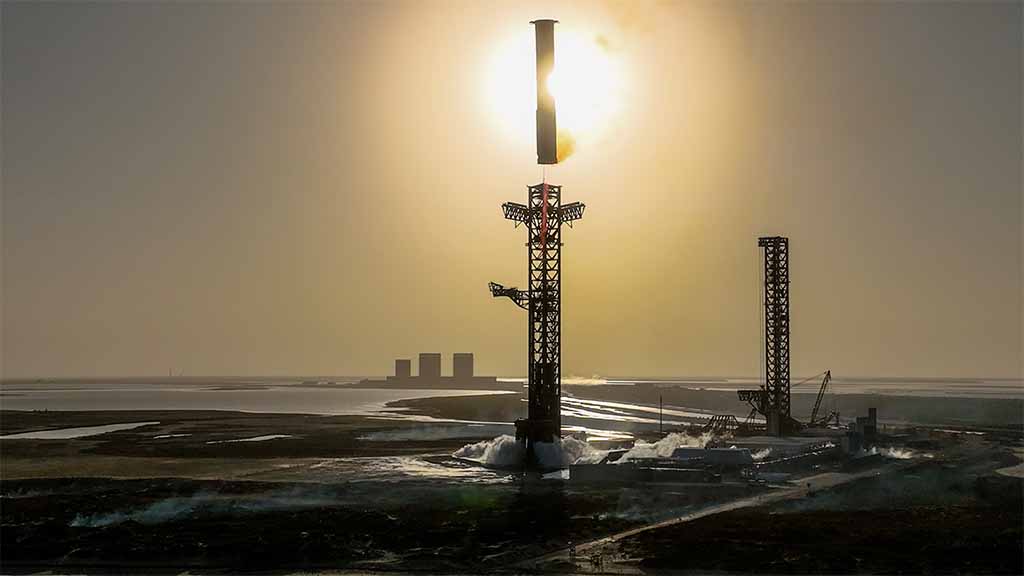SpaceX
8th Starship Flight Test: Liftoff, Booster Catch and Ship Loss event in a sequence

On Thursday, March 6, SpaceX conducted the 8th Starship Flight Test from Starbase, Texas, and here’s a turn of events that happened in sequence.
Liftoff and hot-staging
The integrated flight lifted off from Starbase Texas at 5:30 p.m. CT with 33 of the Super Heavy booster’s Raptor engines burning at full power.
The flight maintained nominal trajectory and after two-minutes, it performed a booster shutdown, followed by hot-staging. Simultaneously, the ship also started its six Raptor engines to continue its ascent to space.
Booster landing
After hot-staging, the booster relit 11 of 13 planned Raptor engines to perform a boostback burn to propel itself into the landing site trajectory.
The Super Heavy soon returned to the catch tower and relite 12 out of 13 panned engines to slow down the descent and transition to only 3 center Raptor engines to shift toward the catch tower arms. This event marks the third Super Heavy booster catch.

Starship Super Heavy Tower Catch (Source – SpaceX)
Ship loss
On the other hand, the ship kept the ascent phase to the planned trajectory. Before completion, a fire broke out in the aft portion of the ship, which led to four engine failures.
The ship started spinning and lost altitude control. Eventually, the ship lost telemetry and SpaceX has confirmed that the final contact with the Ship was made at around 9 minutes and 30 seconds in the mission time.
Aftermath
After anomaly, SpaceX began a joint operation wth FAA, Air Traffic Control and other safety officials to complete pre-planned contingency responses.
The ship’s remaining will be falling in the pre-planned Debris Response Area. However, people in these areas, who identified such debris, can contact SpaceX or local authorities for recovery.
Investigation
SpaceX has said that it will find the root cause of the 8th Starship Flight Test ship failure and improve the design and technologies to succeed in the Flight 9.
(source)










